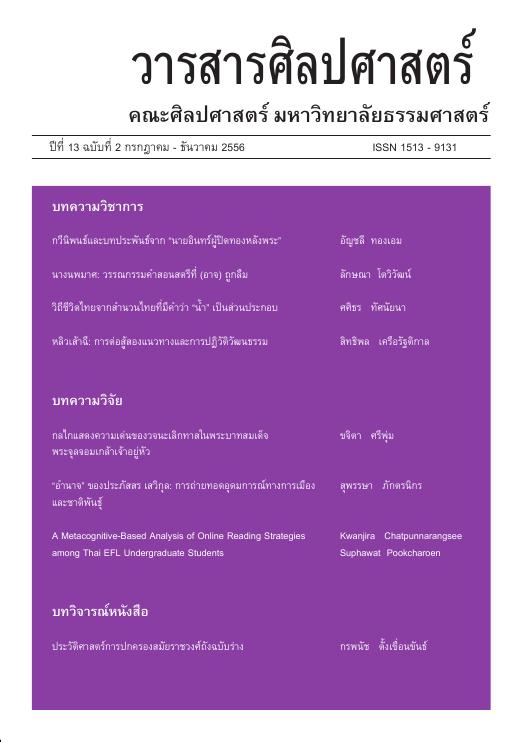หลิวเส้าฉี: การต่อสู้สองแนวทางและการปฏิวัติวัฒนธรรม
Main Article Content
บทคัดย่อ
“การต่อสู้สองแนวทาง” เป็นกรอบที่นักวิชาการจํานวนไม่น้อยใช้วิเคราะห์การเมืองในหมู่ชนชั้นนําของจีนก่อนเกิดการปฏิวัติวัฒนธรรมใน ค.ศ. 1966 โดยฉายภาพให้เห็นความขัดแย้งระหว่างแนวคิดที่เน้นการปฏิวัติของเหมาเจ๋อตงผู้เป็นประธานพรรคคอมมิวนิสต์กับแนวคิดที่เน้นผลสัมฤทธิ์ของหลิวเส้าฉีผู้เป็นประธานาธิบดี อย่างไรก็ตาม บทความนี้ต้องการ แสดงให้เห็นว่าในช่วงครึ่งแรกของทศวรรษ 1960 หลิวยังคงปรึกษาหารือกับเหมาในเรื่องที่สําคัญโดยเหมาเป็นผู้ให้ความเห็นชอบสูงสุด และถือได้ว่าเหมามีบทบาทครอบงําการเมือง ในช่วงดังกล่าว การตกจากอํานาจของหลิวในยุคปฏิวัติวัฒนธรรมจึงมิได้เกิดจากความพ่ายในการต่อสู้ระหว่างสองแนวทาง หากแต่เกิดจากเหตุการณ์ “กระแสทวนเดือนกุมภาพันธ์” เมื่อ ค.ศ. 1967 ที่ทําให้เหมาจําเป็นต้องเน้นย้ำความชอบธรรมของการปฏิวัติวัฒนธรรมด้วยการใช้หลิวเป็นเป้าหมายหลักในการโจมตี
The so-called “two-line struggle” has been used as an analytical framework for the study of Chinese elite politics before the outbreak of the Cultural Revolution in 1966, depicting the conflict between Party Chairman Mao Zedong’s revolutionary romanticism and State President Liu Shaoqi’s pragmatism. However, given the fact that Liu repeatedly deferred to Mao on important issues and it was Mao who made final decisions, this article argues that Chinese elite politics in the first half of the 1960s should be viewed as “Mao’s dominance”. Therefore, Liu’s fall during the Cultural Revolution was not because of his defeat in the struggle against Mao, but a result of the “February Adverse Current’ incident in 1967 which forced Mao to reemphasize the legitimacy of the Cultural Revolution by using Liu as a main target.


